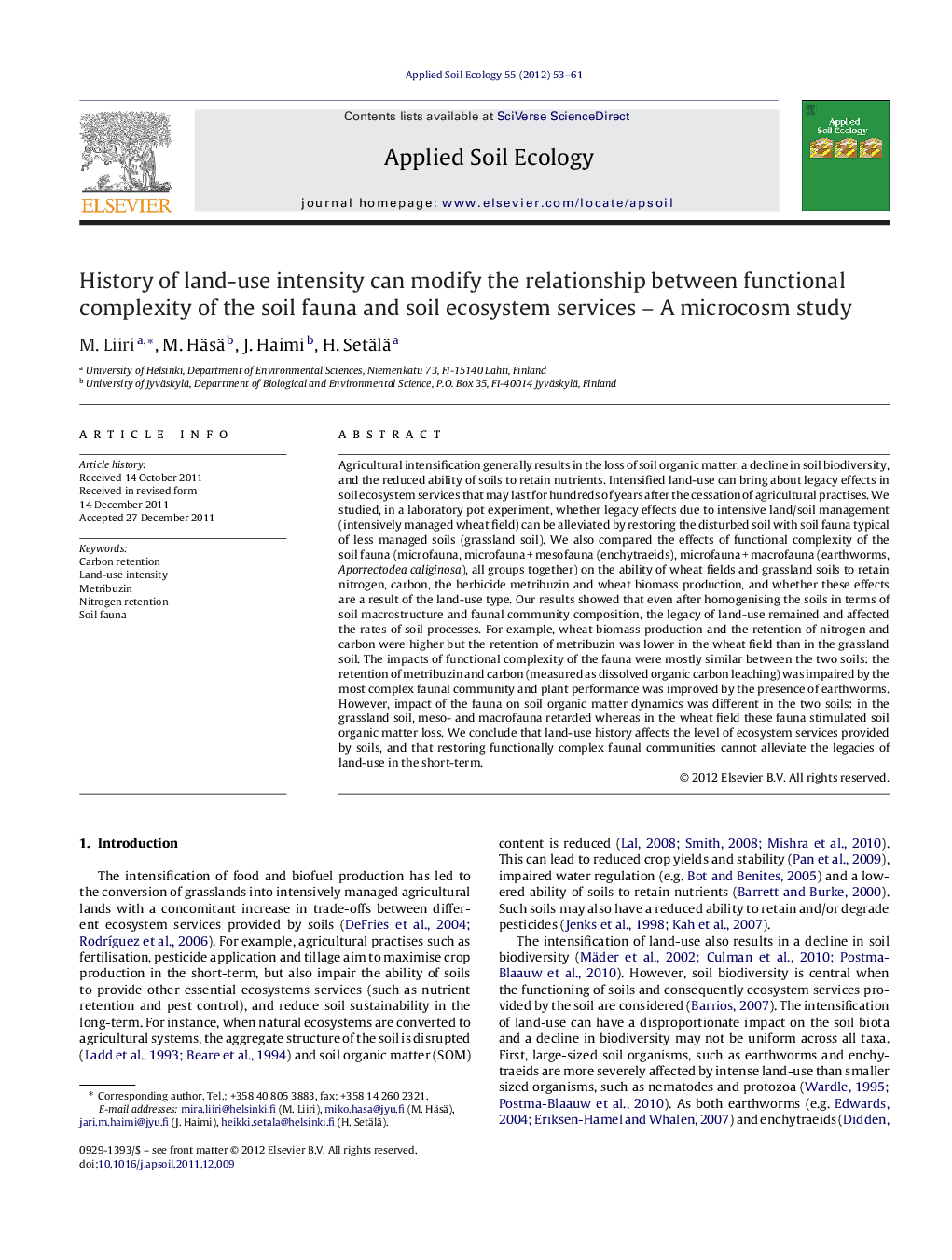| Article ID | Journal | Published Year | Pages | File Type |
|---|---|---|---|---|
| 4382644 | Applied Soil Ecology | 2012 | 9 Pages |
Agricultural intensification generally results in the loss of soil organic matter, a decline in soil biodiversity, and the reduced ability of soils to retain nutrients. Intensified land-use can bring about legacy effects in soil ecosystem services that may last for hundreds of years after the cessation of agricultural practises. We studied, in a laboratory pot experiment, whether legacy effects due to intensive land/soil management (intensively managed wheat field) can be alleviated by restoring the disturbed soil with soil fauna typical of less managed soils (grassland soil). We also compared the effects of functional complexity of the soil fauna (microfauna, microfauna + mesofauna (enchytraeids), microfauna + macrofauna (earthworms, Aporrectodea caliginosa), all groups together) on the ability of wheat fields and grassland soils to retain nitrogen, carbon, the herbicide metribuzin and wheat biomass production, and whether these effects are a result of the land-use type. Our results showed that even after homogenising the soils in terms of soil macrostructure and faunal community composition, the legacy of land-use remained and affected the rates of soil processes. For example, wheat biomass production and the retention of nitrogen and carbon were higher but the retention of metribuzin was lower in the wheat field than in the grassland soil. The impacts of functional complexity of the fauna were mostly similar between the two soils: the retention of metribuzin and carbon (measured as dissolved organic carbon leaching) was impaired by the most complex faunal community and plant performance was improved by the presence of earthworms. However, impact of the fauna on soil organic matter dynamics was different in the two soils: in the grassland soil, meso- and macrofauna retarded whereas in the wheat field these fauna stimulated soil organic matter loss. We conclude that land-use history affects the level of ecosystem services provided by soils, and that restoring functionally complex faunal communities cannot alleviate the legacies of land-use in the short-term.
► The history of land-use affects rates of soil processes. ► Impacts of the soil fauna on soil organic matter dynamics vary with land-use intensity. ► Functionally complex soil fauna cannot alleviate the legacy of land-use in the short-term.
